
City of Toyama situates at the central on the sea of Japan coast in Honshu main island. It faces Toyama Bay to the north and Tateyama Mountain Ranges to the east, with forests spreading to its south, hills and mountainous villages occupying its west and cultures developing along rivers running through the city. Toyama Bay is a life marine treasury with abundant of seafood and the 3000 meters high Tateyama Ranges creates magnificent landscape for the gateway to Japan Northern Alps. Toyama, the home to 42,000 inhabitants, are blessed with rich nature.


Toyama was one of the most influencing cities on Japan sea coast in the past. It had good water supplies, systematic drainage and thriving agricultural developments for farming, fishery, commercial and manufacturing industrial sectors. Historically, the Toyama Plain was an ideal farmland but it was frequently became a battle field during feudal age, as it was also an important point for traffic.



Toyama Domain was established since Edo period (1603-1867). After the implementation of positive promotion in industries, production of Japanese paper and medicine flourished. Pharmaceutical industries began to develop as early as from mid Edo era. Its medicine peddlers traveled all over nation at that time and until today, it is still crowned as Town of Medicine.



Though Toyama City is a leading industrial prefecture on Japan Sea Coast and traditionally, a center of Pharmaceutical industries, it never ceases to make effort to re-define itself. Lately, the city pay great attention to address the global environmental problem. It begins to nurture some new industries relating to environmental preservation, recycling and forest restoration, at the same time look into the fields concerning biology and information technology.


City of Toyama was devastated by air raid in 1945 during World War II and was designated as a core city again in year 1996.



The center of Toyama City is quite compact. Sights of interests are within the walking or cycling distance from the train station or airport.
b



Toyama Castle Park Joshi Koen is in the heart of the city with beautiful nature.


Toyama Castle was a small residence dating from 15th century. The reconstructed Castle now serves as a municipal history Museum displaying artifacts and works of art related to Toyama Domain.


Toyama Castle was first built in 1543 by Jimbo Nagamoto as his headquarters but he was exiled from the castle 25 years later after attacked by Uesugi Kenshin, the ruler of Echigo (Nigata). Uesugi continued and expanded his invasion to Etchuu (Toyama) but when he died in 1578, the power fell into the hand of Oda Nobunaga who 5 years later, sent and appointed his retainers, Narimasa as the Lord of Toyama Castle. In 1585, when Nobunaga was forced to kill himself and Narimasa was subjugated by the new leader Hideyoshi, the castle was demolished. Ten years later, Toyama domain was put under the control of Maeda Family who did a large scale of renovation in 1605 but the castle was burnt down 4 years later. The castle was reconstructed when Maeda Toshitsugu, the first feudal lord of Toyama, moved in in 1639.Toyama Castle remained in the hand of Maeda Family for 200 years until 1873, the new government of Meiji ordered to close and the site was converted into a politics and economy new center. The present castle tower was restored after World War II as a memorial and a museum of local history.


The beautiful sight of the castle tower reflecting in the water moat appeared again after restored in year 1954.




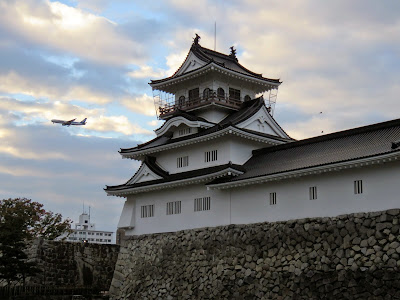


Toyama Castle Park Joshi Koen though small in scheme, is home to many fauna and flora.

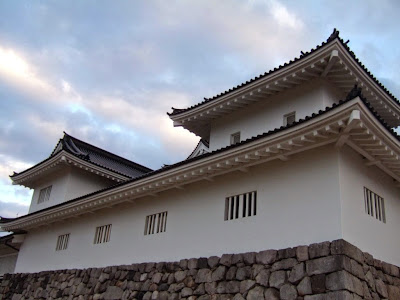
Toyama Municipal Folk Museum has four floors with exhibition hall at 2nd and observation deck on the top floor.


The calligraphy of hand written documents displayed in the exhibition hall are interesting.


Toyama in net.


Street scene: a noodle house, the hotel where we stayed and local residences with covered car garage.



Buddhist Temple and a Church.

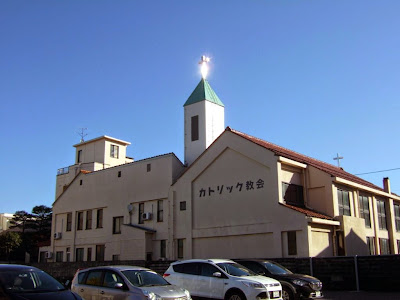
There are many old Buddhist Temples scattering around south east part of Toyama City. We spent couple of hours strolling at this historic Buddhist Temple area but regret that we gathered no much information about all these temples.

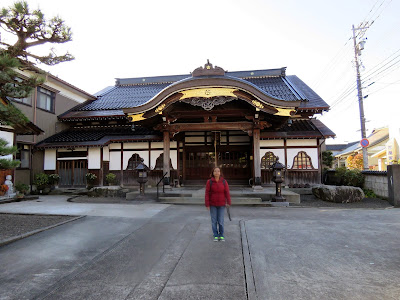
This one should be a Buddhist Zen Temple but they were closed with no one for us to refer.



The white image of Goddess of Mercy erected in front of the hall is beautiful.


Various pagodas



This is also a temple but with a modern door for the hall but there is a 13 tiered old stone pagoda standing at a corner.



Qing-yuan Zen Temple obviously must be an old temple. The wooden carving at its front roof eave are quite impressive.


According to map, there are more than 30 old temples within the district but we could not differentiate some of them as they appear like residential houses unless they have name stated like this one.



The public transportation in Toyama after ungraded in last few years, is excellent. Street car line operates into three lines system with one goes to down town, one to south and one to west, with many connections to various regional rail lines.


The interesting paintings on the tram cars.


Tram cars are run by private company.


I love its innovative road signs, simple, clear and advertising.





Manhole covers are designed with patterns and advertisement which you can hardly encounter in other parts of the world.



This is even more fun,. the small chips of tiles pasted on walking area are carried with kids drawings.


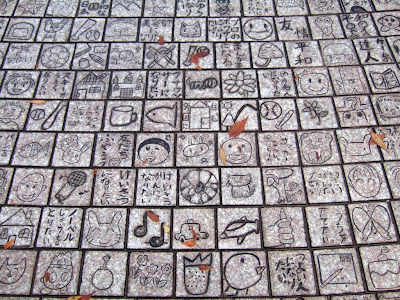



Toyama boasts some of the most fresh seafood in Japan and agricultural produces. How could we miss? Surprised us more was the restaurant's creative and innovative set up. Hanging on top of the center table was a fish.



We ordered a 6 courses Nabe seafood set with additional two side orders for two of us and the whole bill costs us about US$60.00.



Our two side orders include stewed egg plant and a grilled yellow fish belly (Buri Kama) which came out to be a large portion as the dish includes fish belly and other kinds of various fish meat. It was too much for me but they tasted real good.

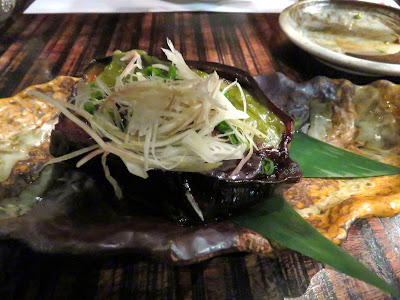
These are main dishes of Seafood Nabe Set. Rice was served last after you finished eating all the contents, as they used the soup left over to boil rice with egg for you. It is very rich in taste.



This was the most fresh fish we ever had though it is quite costly. The white shrimp is the local popular sea produce and it blends into the wild vegetable so well.


The firefly luminous squid also is also one of its delicacy and it is only found in Toyama. we had it in our hotel. The bowl of Ramen was complimentary from the hotel for all its guests after they have enjoyed the hot springs bath at its in house onsen. The poster was pasted in the lift to let its guests know about their caring service.


The bento lunch boxes supplied from Toyama Station cost below US10.00.


Toyama little Train Station



Clear indication of the train route are posted at board of the station.


This train was going for Korube Gorge.


We encountered the most striking rainbow at the remote area of Toyama.

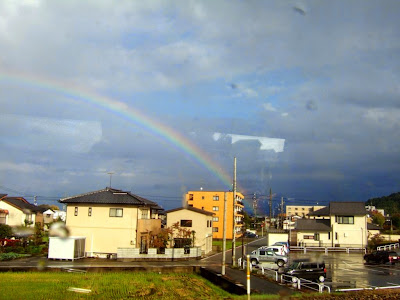


The Limited Express Train runs from Toyama to Osaka and Kyoto once a day. The journey takes 3 hours.


Plain of Toyama is a good farmland and you may witness while the train is crossing by its beautiful rural farming site on the way towards Kyoto.


The beautiful cloud.


An industrial town and its huge car parking building half way to Kyoto


No comments:
Post a Comment